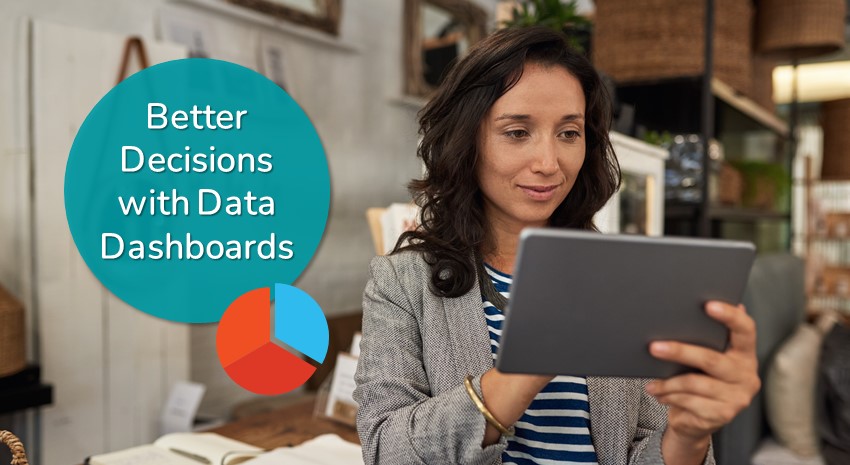5 Ways Retail ERP Dashboards Can Improve Decision Making

A question often posed to us by retailers is, “How can I make better decisions to help reduce costs and increase profitability?” The answer: A retail ERP dashboard that provides the relevant information accurately and quickly.
ERP dashboards are especially useful in calculating how indirect expenses such as overhead or occupancy costs impact store revenue. That’s just one example, but it’s a powerful one.
Retail ERP dashboards are customized according to key performance indicators (KPIs) that are pertinent to a specific operation or an employee’s role. So, for example, if you want to measure the performance of a customer service call center, the KPIs might include factors like how long it took for a representative to answer calls, customer ratings, or the number of customer complaints.
Most dashboards have a low set-up cost because they’re typically included in a resource planning ERP system. Often referred to as a role center, the dashboard generated by the ERP contains standard KPI metrics that are used to create reports, including financial reports, cash flow information, and sales reports. In addition, all the metrics are “drillable,” allowing you to dig into the details behind each metric.
Use Retail ERP Dashboards to Get Financial Information and Increase Data Visibility
1. Access to Real-time Data
Let’s say an apparel retail chain has several store locations, each with varying rental prices that increase annually. Utility expenses also vary depending on the location or square footage of the store. If that retailer does not adjust operations according to shifting overhead and occupancy costs, the bottom line can be negatively impacted.
A retail ERP dashboard can help by providing an abundance of at-a-glance data, quickly showing how overhead and occupancy costs affect sales profits, employee salaries, and other expenses at each location.
Access to real-time information is vital so you can immediately see the cause and effect of decisions on business operations. This also helps you better adjust to the ebb and flow of industry trends.
2. Keeping the Budget in Check
A retail ERP dashboard allows you to check cost overruns for budgeted items, including rent or store utilities, in real time. Just configure the dashboard to conduct a financial analysis of expenses in your system, including rent, utilities, Internet access—whatever factors into it. With an at-a-glance dashboard, you can quickly see if ongoing occupancy and overhead costs are consistent with budgeted costs.
3. Gaining Deeper Insights into Business Operations
Retail ERP dashboards help you narrow down the correlation or root cause of an unusual or specific event, such as a spike in expenses. So, if your dashboard shows spikes in other data sets—non-operating costs, for example—occurring at the same time, you can quickly identify possible correlations.
4. Staying Focused on Performance Outcomes
In the past, it was common for a retailer’s corporate office to track KPIs using dashboard metrics, sending the resulting reports to local store managers monthly or weekly. Today, however, most retailers are moving the responsibility of creating these dashboards and metrics to local store managers, which is great because the managers, who directly operate a store, greatly benefit from having real-time, at-a-glance performance metrics of what they’re tracking. This setup leads to better decision making based on performance outcomes.
5. Making Better Decisions
When it comes to managing overhead or occupancy costs, store managers are can run “what-if” scenarios using dashboards. The key is to have accurate data in the retail ERP system, which is the original source for the dashboard, so it’s important to keep the data in your retail ERP system up to date.
Learn How Retail ERP Dashboards Can Help Your Business
To learn more about retail ERP dashboards and how to put them to work for your company, contact the retail experts at ArcherPoint, and be sure to check out our financials and business intelligence solutions for retailers.
